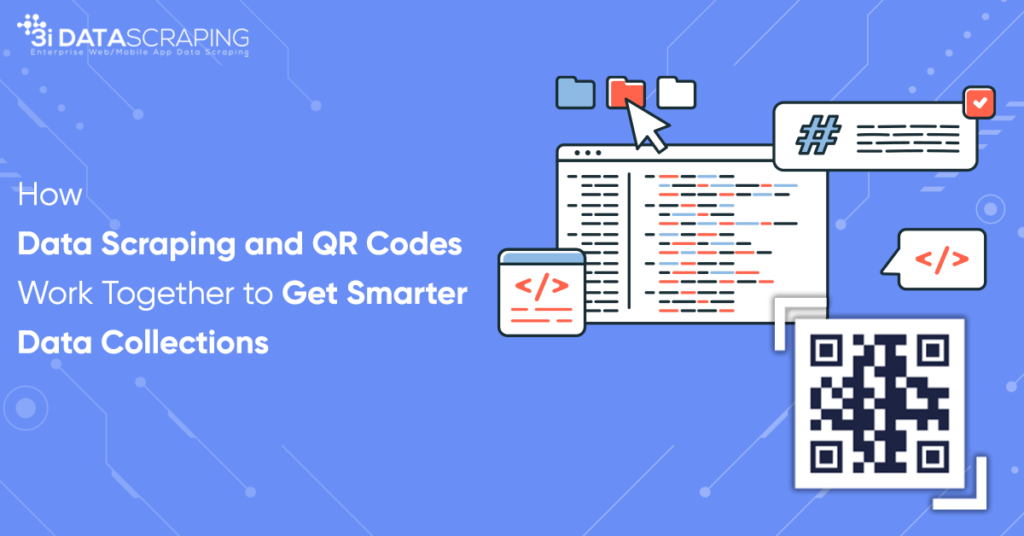Our achievements in the field of business digital transformation.










Data scraping and QR codes are two more new technologies used in combination as companies develop innovative methods for obtaining useful information about their clients, markets, and rivals. While data scraping allows the collection of information from direct clients, QR codes aid in automating online data extraction. By improving real-time insights, this synergy creates new opportunities for effective data collection and analysis.
Each time a customer scans the QR code, they would always be taken to a landing page or some specific URL. Embedding a data scraping script on this webpage automatically captures important information from companies, such as who their users were based on demographics like the type of device and location, among other engagement metrics like click-through rates and time spent on the page. For example, a QR code on the packaging of any product could lead customers to a website where their behavior and interactions would be monitored. This would allow a company to understand their customer’s preferences and trends, allowing them to tailor their marketing strategy.
QR codes are used in several marketing campaigns by different firms; they guide users to some sort of promotional or product information page. Data Scraping Tools can make it possible for businesses to keep track of what QR code URLs their competitors are using and, therefore, make some educated guesses about their strategies. Companies can tell what types of offers the competitors are using, determine the level of user engagement with specific campaigns, and update the promotional content. This analysis helps businesses stay agile and adapt their marketing plans based on the competitor activity.
QR codes often refer to surveys or feedback forms, becoming a popular tool for collecting customer feedback. With the incorporation of data scraping in such a process, the collection of survey results can be automated for a business, enabling faster data interpretation access. This method offers real-time insight in that feedback information is constantly updated from multiple sources and compiled into a single dataset. For example, a restaurant might use QR codes on receipts to solicit customer feedback. Scrape the survey responses, and it will quickly paint pictures, such as complaints and favorite menu items, for actionable improvements.
QR codes can be linked to frequently changing content, such as inventory status or pricing information. Scrape this real-time data: It could enable businesses to keep their digital touch points current. For example, using a QR code on an e-commerce website can link directly to suppliers’ dynamic databases to auto-update product listings with the most current stock levels. On the business end of the market, companies have used price comparison functionality, using competitor pages that were linked through a QR code, and then scraped the data to adjust their pricing responsively.
To effectively integrate QR codes with data scraping, enterprises should apply the following best practices:
Compliance: Enterprises should implement their privacy regulations and inform users after they scan a QR code.
Create Value for Users: Design scannable QR codes that really matter to users and create value, like exclusive content or discounts. You can quickly generate one using the Adobe Express free QR code generator.
Utilize Analytics Tools: The analytics platforms will be used to visualize and interpret data from interactions via QR codes more effectively.
Merging data scraping with QR codes creates a means/ tool whereby companies can substantially improve how they collect and use data. Combining these technologies will allow companies to automate data-gathering workflows and understand customers’ behavior to change strategies effectively. Whether for collecting feedback or analyzing market competitors, data scraping through QR codes can help your organization make business decisions on data. This would provide a satisfactory edge in the competitive environment of today’s data-driven business world.













